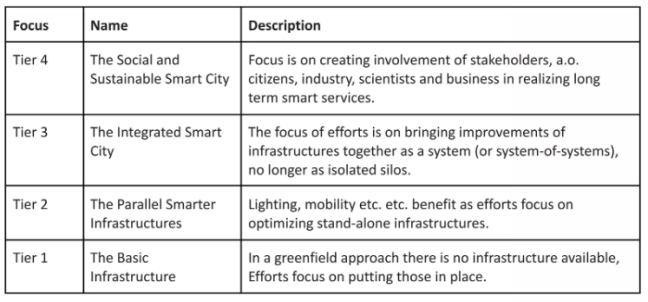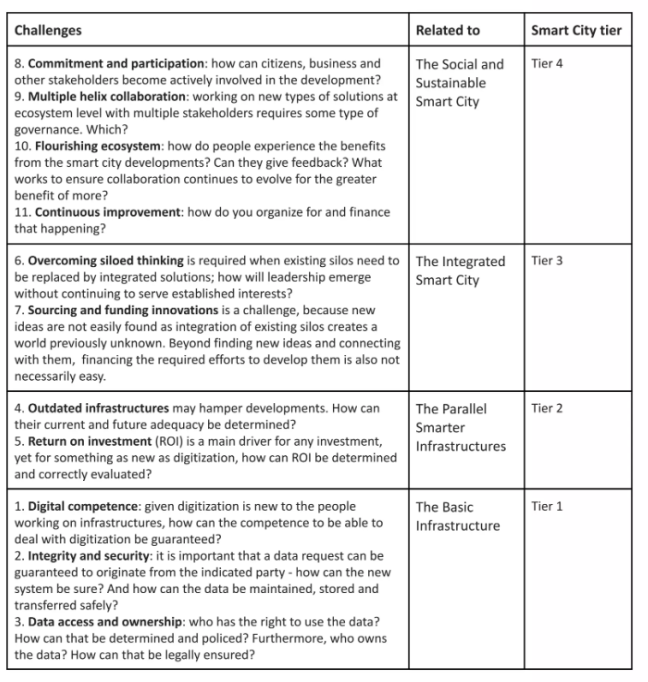In 2012 Eindhoven (The Netherlands) opened the first Living Lab in the Netherlands. The longest clubbing street in The Netherlands started to evolve into an Internet of Things environment. Soon there were more Living Labs. The large inner city industrial site previously owned by Royal Philips was redeveloped, installing a broadband asset. A citizen-scientists initiative called AiREAS started measuring air quality. The municipality of Eindhoven was faced with the question how to align these different initiatives.
Based on years of experience with digitalization, former Philips employees translated a generic OSI approach to one applied to Smart City development. Combined with desktop research on state of the art initiatives, the '4 tier framework for Smart City development' was created. The tiers distinguished were:

The municipality of Eindhoven has been using this framework to plot its digitalization. Essentially what the 4 tier framework does, is to clarify that digitalization cannot proceed to the highest level of application, where it is clear to citizens what happens in their city, without previous investments at lower levels. It also means that various pilot efforts in cities can become connected, when it is clear e.g. that continued separate investments for smart lighting and e.g. smart mobility at a certain moment cease to be the most meaningful way forward.
Plotting then known challenges along the 4 tiers also assigned an appropriate phasing for them to be dealt with. It also provides some level of assessment:

It may not be the most up to date framework. It may however still prove to be valuable for Smart City pioneers and decision makers trying to gain a relatively comprehensive insight into the challenges ahead. It may allow for some strategic planning. And it is rather simple yet comprehensible.

